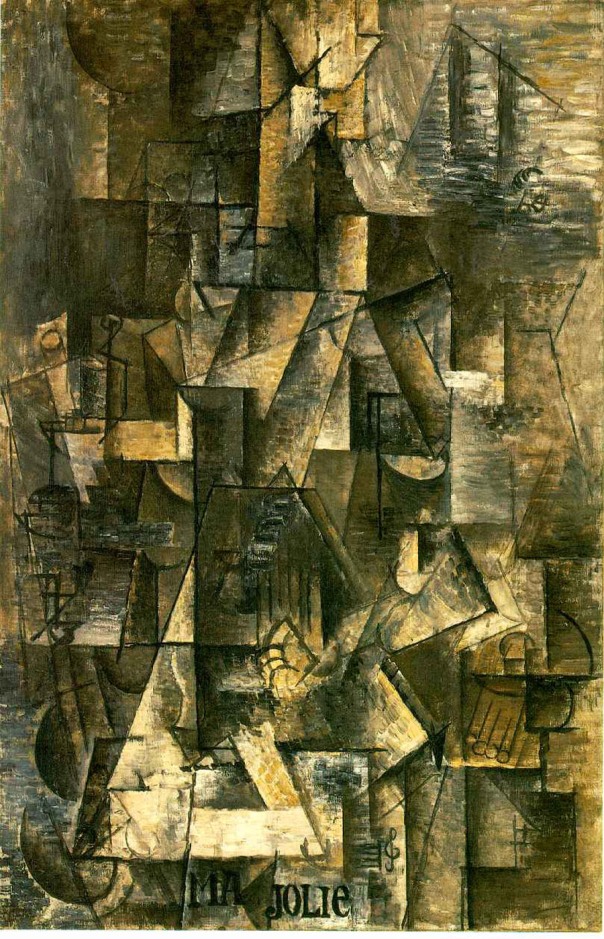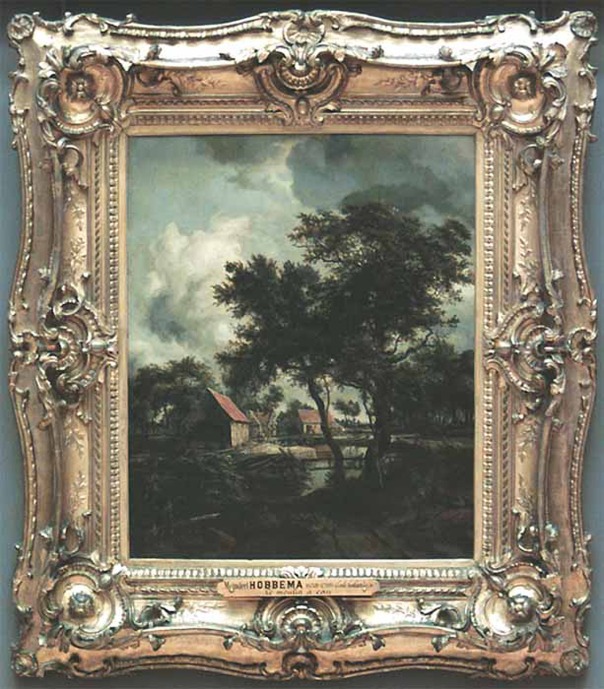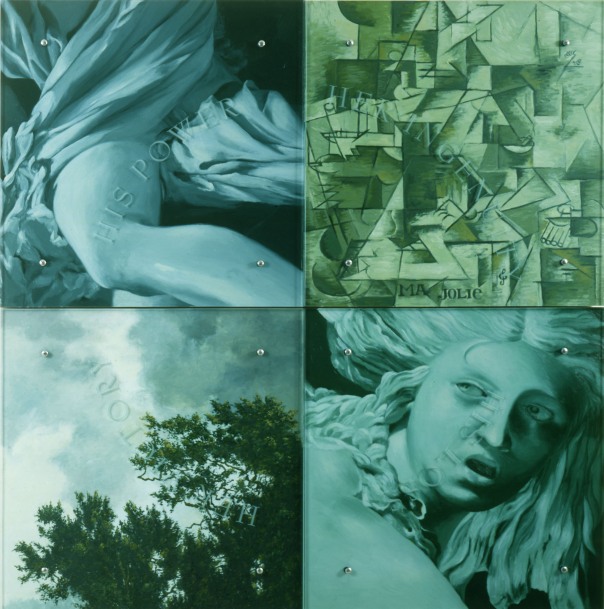In 2006 I made a date with Diane Middlebrook in London. She was battling a rare cancer, victoriously it seemed. Over the years Diane, the writer and literary critic at Stanford University, and her husband Carl Djerassi (the chemist, professor and playwright) had commissioned me to make several paintings for them. Now I was starting a portrait of Diane. I wanted to adapt my work as a repainter to the genre of portraiture, and I saw the opportunity to explore that with Diane, ever an elegant, encouraging and stimulating co-conspirator. My idea was to portray her not by painting how she looks, but by capturing her responses to paintings in the National Portrait Gallery in London.
My connection to Diane deepened considerably after she commissioned me to make two works related to the tale of Daphne and Apollo in Ovid’s Metamorphosis in 2001. She was working on a biography of the poet, about whom next to nothing is known. She needed inspiration and Bernini’s sculpture in Rome of the two gods thrilled her. She wanted me to take it on in a painting for her writing studio. I told her I didn’t do sculpture, that paintings are my thing. But she persisted, and I said I’d think about it.
Although Diane was in London at the time, and I in Paris, we figured out that our paths would soon cross in NY. We made a date for lunch at one of Diane’s favorite Italian restaurants on 57th Street. I order penne rigate with morels, she arugula with shaved parmesan, and we talk about Ovid. Diane tells me about her long attachment to his poetry, and the Apollo and Daphne story in particular. In between attacks on her arugula, she recites passages from the text by heart, ending on the climax to the tale, after Apollo has tried his best to persuade Daphne to give in to him, and she has refused:
…her limbs grew numb and heavy, her soft breasts
Were closed with delicate bark, her hair was leaves,
Her arms were branches, and her speedy feet
Rooted and held, and her head became a tree top,
Everything gone except her grace, her shining.
For Diane it is a tale of Daphne’s triumphant resistance. For me Daphne’s is a tragic decision to forego the pleasures of desire and wandering the woods, to end up a tree.
When the expresso arrives we’ve come around to Bernini. Diane is stubborn, she’s attached to this Bernini sculpture. Despite my mid-western easy-going demeanor, I’m stubborn too. For twenty five years I have focused almost exclusively on the history of painting in my work, using pictures of the past as source material for painted wood panels with glass sandblasted with text. These were not casual decisions for me. But I’m not stupid. This commission intrigues me. So, I consider my options: Try to convince Diane that sculpture just doesn’t suit me? Look for painting sources that will capture the narrative and her imagination, and lobby hard? Forget about the whole thing? Or, re-think my refusal to depict three-dimensional source material.
The fact is I do often include carved wood frames around old masterworks (even sometimes minus the paintings) in my pictures. And I’ve begun to paint drawings. Also, I find this Bernini sculpture riveting too. I hit on the perfect reason to proceed: Metamorphosis. Ovid’s tale carved into Bernini’s marble, transposed into a photograph (I needed images to work from—I wasn’t about to set up an easel in the Villa Borghese), and now transformed again into a painting with words.
There’s another reason for my not walking away, a lost love. Diane has no way of knowing that the artist she’s asked to bring Apollo and Daphne to the walls of her London writing studio set out to be a classicist. I was drawn to Latin by a wise high school teacher whose classes were a refuge from the racial turmoil in mid-sixties Detroit. Maybe we were fiddling around with classical literature while my home-town burned, but my teacher, Donald Riddering, brilliantly used the words of Ovid to illuminate those tumultuous days. Later at the University of Michigan, though, I was subjected to an insufferably starchy professor just hired from Princeton—and I walked away from Latin forever. Diane is giving me a chance to return.
Slipping painting back in, I decide to riff on the metamorphosis idea, taking two works by artists who transformed how we look at the world: Cezanne and Picasso.
For the text on my painting I condense Ovid’s narrative into cascading oppositional phrases. To match the arrogance of Apollo’s refusal to accept Daphne’s “No,” I arrogantly invent a Bernini drawing that doesn’t exist.
I email a computer sketch to Diane. Mostly she loves it. But she hates one of the images. She never says, Change it. But I can’t make a work that Diane won’t like every day she sits at her desk. I find a replacement–magisterial trees pushing up into a brooding sky by my old master friend, Meindert Hobbema. He hands me Daphne’s victory.
Four years after I finished this commission, I videotape Diane for her “portrait” in the National Portrait Gallery in London. We are upstairs in a long hall lined with marble busts.
It’s obvious that Diane thought about what she would wear for the videotaping. She takes great pleasure in sensual fabrics and fine clothing. We talk about the portraits around us. After a while, she comes back to Ovid. She quotes a line from him about his sense that he would never die, that he would live on in his writing forever. And she mentions that she really wants a bust of Pallas Athena in her studio.
But after the videotaping, we stall on the discussions of what images to use. I want historic paintings, she photographs of writers some of whom she knew. I put the project on hold. Then in 2007, Diane’s health declined suddenly. Time was short. I wanted her to be able to see how I envisioned making her portrait, but I hadn’t come up with a solution. I got to work. Fast.







